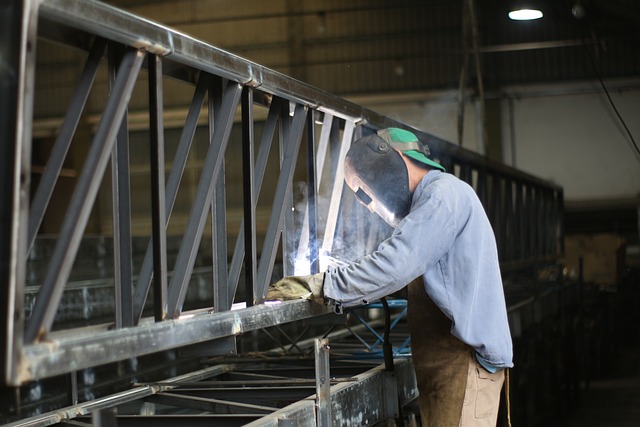Exploring Cutting-Edge Innovations and Their Impact on the Industry
The steel fabrication industry is undergoing a significant transformation driven by advancements in technology and evolving industry trends. These developments are enhancing efficiency, precision, and sustainability, paving the way for the future of steel fabrication. Here, we explore the latest advancements and trends in steel fabrication and how they are shaping the industry.
1. Automation and Robotics
Automation and robotics are revolutionizing steel fabrication by increasing precision and reducing production times. Automated machinery, such as CNC (Computer Numerical Control) machines, are capable of performing complex tasks with high accuracy and consistency. Robotics are being used for welding, cutting, and assembly, minimizing human error and enhancing safety.
Incorporating these technologies into steel fabrication processes allows for faster turnaround times and improved product quality. As automation and robotics continue to evolve, they are expected to play an even more significant role in the industry, making fabrication processes more efficient and cost-effective.
2. 3D Printing in Steel Fabrication
3D printing, or additive manufacturing, is emerging as a game-changer in the steel fabrication industry. This technology enables the creation of complex steel structures and components that were previously difficult or impossible to produce using traditional methods. 3D printing allows for greater design flexibility, reduced material waste, and shorter lead times.
As 3D printing technology advances, it is becoming more accessible and cost-effective for industrial applications. The ability to print steel components on-demand and on-site can significantly streamline fabrication processes, leading to increased efficiency and innovation in the industry.
3. Advanced Software and Simulation Tools
The use of advanced software and simulation tools is transforming the design and planning stages of steel fabrication. Software such as BIM (Building Information Modeling) and CAD (Computer-Aided Design) enable precise modeling and visualization of steel structures. These tools allow fabricators to identify and address potential issues before production begins, reducing errors and rework.
Simulation tools also play a crucial role in optimizing fabrication processes. By simulating different scenarios and analyzing the outcomes, fabricators can improve efficiency, reduce costs, and ensure the highest quality standards are met. The integration of these advanced tools is leading to more accurate and efficient steel fabrication workflows.
4. Sustainable Practices and Materials
Sustainability is becoming a key focus in the steel fabrication industry. Fabricators are adopting environmentally friendly practices and materials to reduce their carbon footprint and promote sustainability. This includes using recycled steel, optimizing energy consumption, and implementing waste reduction strategies.
Emerging technologies are also contributing to more sustainable steel fabrication processes. For example, advancements in welding techniques and materials can reduce energy usage and emissions. As the industry continues to prioritize sustainability, these practices and technologies will play a crucial role in shaping the future of steel fabrication.
5. Enhanced Welding Techniques
Welding is a critical process in steel fabrication, and advancements in welding technology are significantly improving the quality and efficiency of fabricated products. Techniques such as laser welding, friction stir welding, and robotic welding offer greater precision and consistency compared to traditional methods.
These advanced welding techniques not only enhance the structural integrity of steel components but also reduce production times and costs. As welding technology continues to advance, it will further elevate the capabilities and performance of steel fabrication processes.
6. IoT and Smart Fabrication
The Internet of Things (IoT) is making its way into steel fabrication, creating smart factories where machines and systems are interconnected and communicate with each other. IoT-enabled devices collect and analyze data in real-time, providing insights that help optimize production processes, improve maintenance schedules, and enhance overall efficiency.
Smart fabrication environments enable better resource management, predictive maintenance, and improved decision-making. As IoT technology becomes more integrated into steel fabrication, it will lead to more intelligent and responsive production systems.
Emerging Technologies
The future of steel fabrication is being shaped by a range of emerging technologies and trends that are driving innovation and efficiency in the industry. Automation, 3D printing, advanced software, sustainable practices, enhanced welding techniques, and IoT are all contributing to a transformative shift in how steel components are designed, fabricated, and assembled.
By embracing these advancements, the steel fabrication industry can achieve higher levels of precision, productivity, and sustainability. At Industrial Service Partners, we are committed to staying at the forefront of these innovations, ensuring that our clients benefit from the latest technologies and trends in steel fabrication. Contact us today to learn more about our cutting-edge steel fabrication services and how we can support your industrial projects.
Let's get started.
Contact us today to discuss your industrial service needs and get a free quote.



